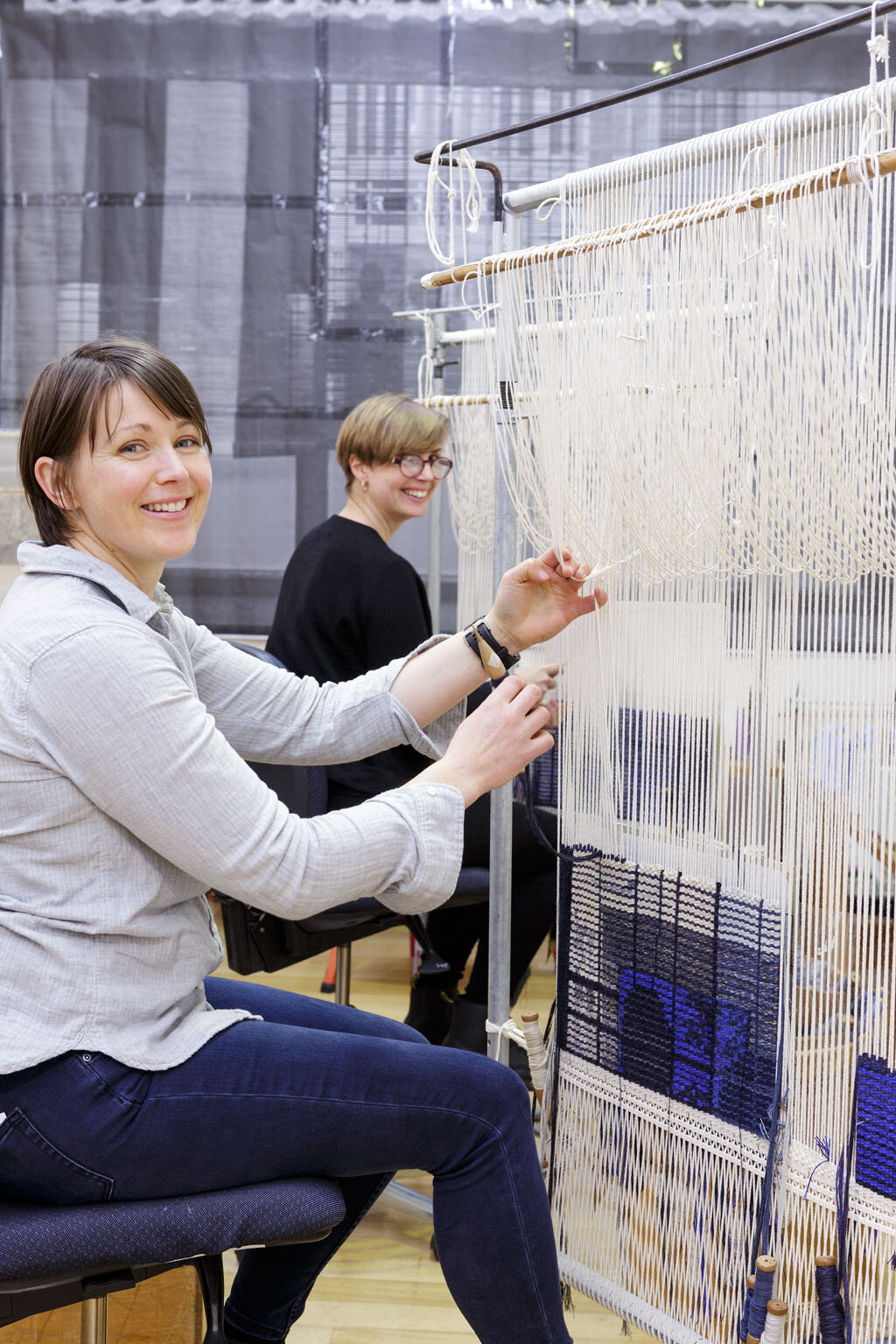‘22 Temenggong Road, Twilight’ 2018, Justin Hill, woven by Sue Batten, Chris Cochius, Karlie Hawking, Pamela Joyce, Leith Maguire, Sophie Morris, Cheryl Thornton, 2.35 x 3.54 m, wool, cotton. Photograph: Jeremy Weihrauch.
Justin Hill’s Tapestry Design Prize for Architects 2016 winning entry ‘22 Temenggong Road, Twilight’ was woven by the Australian Tapestry Workshop in 2018.
The journey... It’s one thing to enter a design competition, and another thing to do it justice. At the outset I was more than a little lost. Swotting up on contemporary Australian tapestries had put the fear of God into me, and I wondered endlessly what sort of work would look best on that big wall in the National Gallery of Australia (NGA). I needed a plausible story, a dimension, and something that could be woven.
What helped me was that I had taken weaving as an elective in my uni days. I had learnt how to string up a small loom, and how difficult it was to keep things horizontal and vertical. My vertical edges seemed always to bow inwards. And the time involved! This was single-ply wool weaving, using remaindered skeins of wool from a carpet factory in Tasmania I collected on my holidays.
One idea lying on my dining table amid the failed attempts, sketches and notes, with two weeks to go, was my start at 22 Temenggong Road, Twilight.
There, shown on several blurry photo- graphs taken early one evening outside my old house in Singapore, was the start of an idea. It had a story, of lasting memories, it had layers of intrigue, and it was architectural; a full-sized woven window for a wall of the NGA. There was also a certain romance to it, and it was theatrical, capturing that evocative time when blue becomes dominant as night descends.
Several rounds of flattening, merging, sharpening, and colour adjustment took place. Finally, as I was showing it to a colleague, he suggested that it perhaps needed something further to bring a scale to the composition. So in went the silhouette of myself with my mother; two figures looking out, to represent the many friends and family members who had visited in the two decades I had lived there. Done.
Fast-forward to the present, and to the loom. ATW had decided to produce the tapestry, with weavers lead by the highly experienced Sue Batten. Later, Cheryl Thornton joined. Samples arrived in Singapore for review, all artworks in themselves. Adjustments were made, questions asked.
In the image we see into my house from the outside, when day becomes night, through a layer of fraying chick blinds, some missing their cotton linings making them partially transparent like a theatre gauze. Then through another layer of mesh which kept out monkeys and other invaders.
The geometry of the blinds and the mesh don’t align, creating an ikat-like complexity which might be challenging. Beyond these is the inner wall, complex in itself with louvred doors, openings, my stereo equipment and CD collection in view.
Finally, patches of the inky evening sky from the far side of the house are visible through openings. Enclosing all this is the window frame itself, and the roof tiles above, sagging after 80 or 90 years of being there. To make some sense of this I produced a plan of that part of the house for the weavers.
Soon after I met Sue, Karlie, Leith, Sophie, and Cheryl and the rest of the team in Melbourne. Colours were finalised, samples scrutinised again, and the loom was up.
I was shown how colours were plied together to produce incredible depth and richness. The penny dropped: what a task this was, to take the four weavers nearly a year to complete. I wondered how to react, being 6000 km from Melbourne most of the time.
I should not have worried, because the process is all based on mutual trust. For in that big room in South Melbourne there is a formidable combination of creativity, enthusiasm, experience, and of course humour. Nothing seems daunting to the weavers or to their management or Board: no cultural journey or the saddest of subjects, such as their recently completed epic Morning Star tapestry, stands in their way. Nothing is too big or too small, and every nuance is so carefully considered.
I think we are all doing this project justice. More than that, it is for me a great privilege to take this remarkable journey, especially as it’s all a bit mad as well, which I love.
Justin Hill at the Australian Tapestry Workshop. Photograph: Jeremy Weihrauch.
Karlie Hawking and Leith Maguire weave experimental samples for the ‘22 Temenggong Road, Twilight’ tapestry. Photograph: Jeremy Weihrauch.



